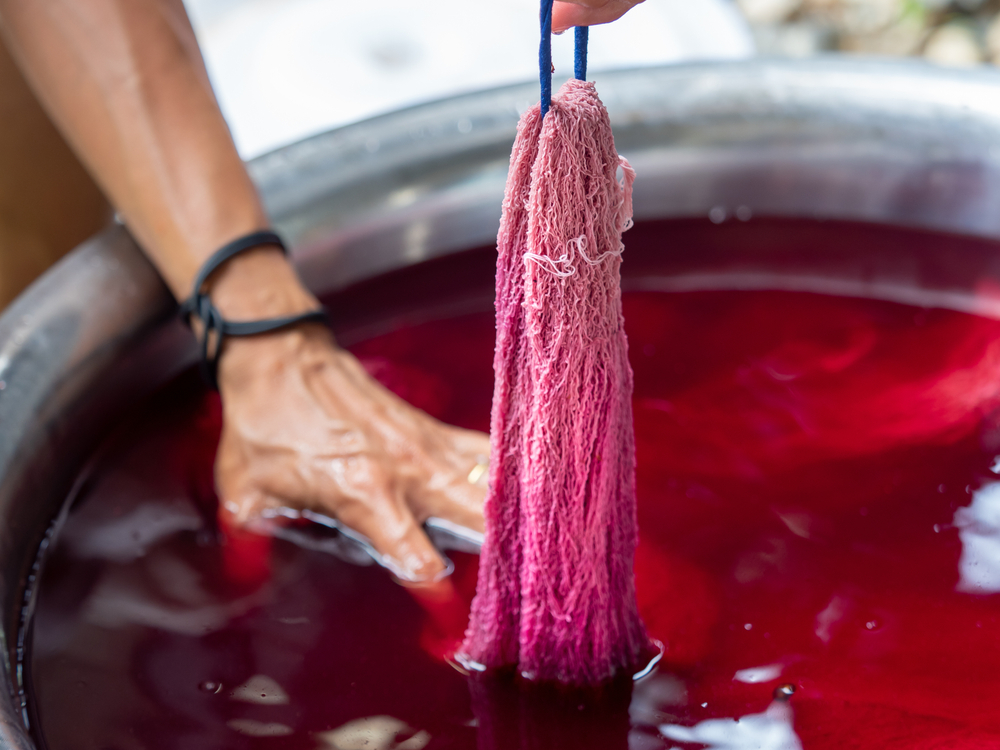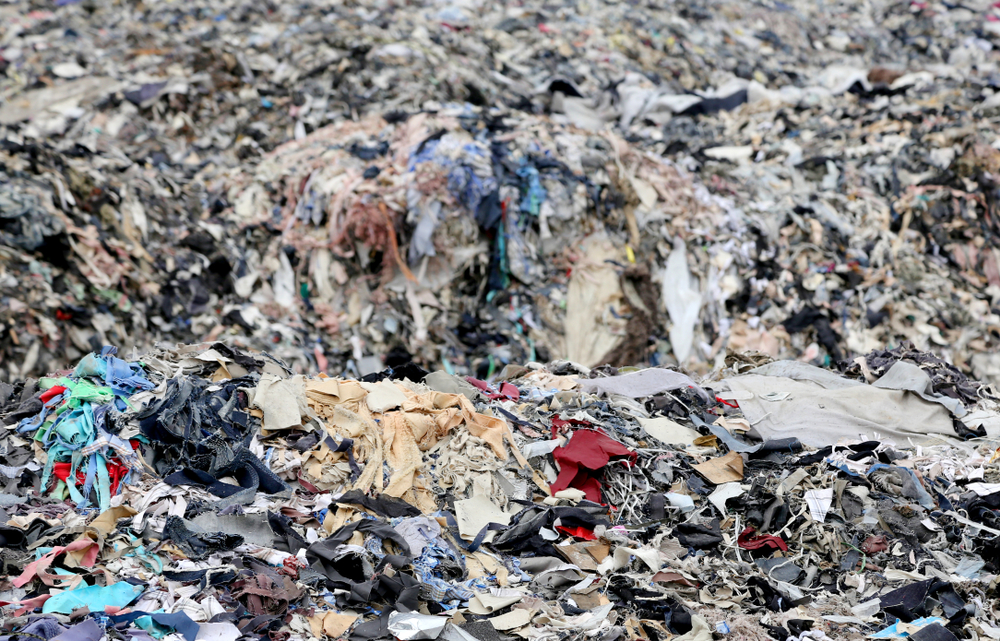
Many of us try our best to limit the plastic in our lives. I know I do. I’m always on the lookout for tips and tricks around plastic reduction. For example, choosing reusables over single-use products. Saying no to plastic straws. Buying food that isn’t suffocated in plastic when I can. But in all my previous efforts, I often overlooked a major factor that plays a key role in plastic pollution, even though it’s been right under my nose the whole time – my clothes.
The fashion industry produces around 100 billion items of clothing each year. Nearly 70 billion of those items are made of plastic. And that number is expected to increase with the rise of fast fashion.
When I was an undergraduate, stores like Forever21 and H&M were my go-to places for clothes. Mostly because they were some of the only affordable options around. I had a part-time job at a café while I was at school, and I spent most of my paycheck on food. Shopping at affordable clothing stores allowed me to look and feel the best I could with what I had. What I didn’t realize at the time though, is the impact these seemingly cheap and accessible clothes had on my health, as well as the planet’s.
To create plastic, billion-dollar companies extract large amounts of fossil fuels from the earth. They process them in energy-intensive and highly polluting facilities. Creating synthetic fibers for our clothing involves the same process. Producing synthetic fibers each year requires about 342 million barrels of oil, releasing enormous amounts of greenhouse gasses into the atmosphere. But plastics, including synthetic fibers, consist of more than just oil. They’re actually a mix of oil (or other petroleum products like fracked gas) and over 16,000 chemicals, with at least 4,200 known to be hazardous to people and the planet. Some familiar names of these synthetic fibers are polyester, nylon, acrylic, spandex, fleece, and polyolefin. And they’re everywhere – from our clothes to our rugs, and even our furniture! Consumerism obsesses over this stuff.

Companies lean heavily on synthetic fibers to keep up with fashion trends. Why? Because synthetic fibers are easy and cheap to make in large quantities – making them a seemingly perfect solution for appeasing the demand (and crisis) of fast fashion. But from production to disposal, each article of synthetic clothing has adverse effects on the environment and our health.
Fibers and yarn, whether natural or synthetic, typically come in nude or neutral shades. To give these fibers the vibrant colors consumers love, companies dye them. And these dyes tend to be toxic chemical cocktails. This is especially true for dyes coloring synthetic fibers, as oil-based fibers can only retain color from oil-based dyes. In fact, manufacturers use around 8,000 chemicals in the coloring process. Combine that with the more than 16,000 chemicals used to create plastic – including those already known to be hazardous – and synthetic fibers become a huge problem for our health; starting with our skin.
The pores on our skin allow substances (like sweat) to exit the body. But pores also allow our skin to absorb chemicals in our environment. So, if you’re wearing a synthetic shirt, your body can absorb the chemicals used to produce it.
In 2016, American Airlines gave their flight attendants new uniforms made of synthetic fibers and dyes. Though there was excitement around new uniforms at first, complaints, and eventually a lawsuit, followed. Flight attendants were experiencing swollen eyes, trouble breathing, rashes, blisters, and itching or burning skin – all from their new uniforms. Trace amounts of formaldehyde, toluene, and other toxic chemicals were found in their uniforms, all of which have been known to cause health problems. Needless to say, the flight attendants won the lawsuit.
Looking back at when my fast fashion buys were at their highest, it all makes perfect sense now. Wearing certain synthetic fabrics caused itching or burning skin sensations for me too. I washed them repeatedly, thinking it would flush out whatever was making me so itchy. But the feeling never went away. And the shape and structure of these garments just got worse and worse.
Manufacturers don’t make synthetic clothes to last. Every time we wash synthetic garments, hundreds of thousands or even millions of microplastics are shed into wastewater. These microplastics eventually make their way into our water bodies, like oceans, lakes, and rivers. Most washing machines aren’t capable of catching tiny microfibers, microplastics, or nanoplastics. In fact, scientists estimate that 35% of the microplastics in our oceans come from washing machines. This pollution inevitably makes its way into marine life, the food we eat, the water we drink, and alarmingly, our very own bodies. But synthetic textile pollution doesn’t end there. When the time comes to discard those synthetic clothes, the burden of that plastic trash falls not only on our planet, but on marginalized communities.
Consumers discard at least three out of five articles of clothing after a year (or less) of wear, only to end up in a landfill or incinerator. Even donated clothes might face the same fate, causing grotesque amounts of pollution and injustice for countries in the Global South, including Kenya and Ghana.
In 2019, Kenya imported more than 200,000 tons of second-hand clothes – 30% to 40% of which was unwearable. Countries like the United States, the United Kingdom, and China too often send broken or soiled clothes to the Global South, contributing to textile waste. Kenya receives 165 to 220 tons (or about 60 to 75 truckloads) of textile waste daily. Much of that is dumped or burned – polluting the Nairobi River, a main source of agricultural and drinking water for locals.
Discarded plastic clothing alone is estimated to have released at least 1.4 quintillion (or a million trillion) plastic microfibers into the ocean. Once there, these fibers have a very high chance of entering our bodies via the water and food we consume. Researchers estimate that each of us ingests about 14,000 to 68,000 plastic microfibers every year and inhales about a credit card’s worth of plastic per week.
Even though many of us might buy a polyester shirt, nylon activewear, or any other kind of synthetic textile from time to time, we aren’t the cause of plastic pollution – companies are. So much of our clothing is made from synthetic fabrics that avoiding them is nearly impossible. And for many, synthetic clothing is the only option available to them. That’s why we need the fashion industry, including fast fashion companies, to focus on bettering their practices, for their consumers and the planet. But many won’t. They’re making too much money off plastic textiles to care about the waste and toxics they’re spreading, despite the steady rise in demand for sustainable products.
In my undergrad years, I only vaguely knew about the impact of fast fashion on the planet, but I cared very much about our environment, the animals who inhabit it, and the people who call it home. If I knew then what I know now, I would have tried my best to avoid fast fashion. I would have instead utilized thrift stores more than I did. Or better yet, make do with the clothes I already had. But even those options can end up hurting the planet depending on what I bought or how often I washed my clothes.
That’s why we need strong policies in place to help put a stop to the plastic problem. That’s where Just Zero comes in: A group of environmental experts fighting for the Zero Waste future this planet needs. We know the solutions that can get us there. Join Just Zero as we advocate for these policies nationwide. Stay informed by signing up for our emails!
